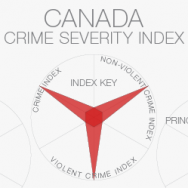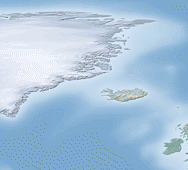
Working with the Crime Severity Index has been an interesting exercise. The data are available through Statistics Canada, which tracks police-reported crime severity as well as the volume of reported crimes. The Crime Severity Index offers a secondary measure that helps us to understand more about the crimes committed per Province. Generally speaking, severity of crime is not correlated with the volume of crime committed, but there are certainly some outliers. We inherit the inability to determine whether or not these correlations actually prove to be true when studying data aggregated to such a large (Provincial) extent. Continue reading »


 After having seen the many iterations of the global connectivity map, I have decided to give it a try myself. The maps are being produced using
After having seen the many iterations of the global connectivity map, I have decided to give it a try myself. The maps are being produced using